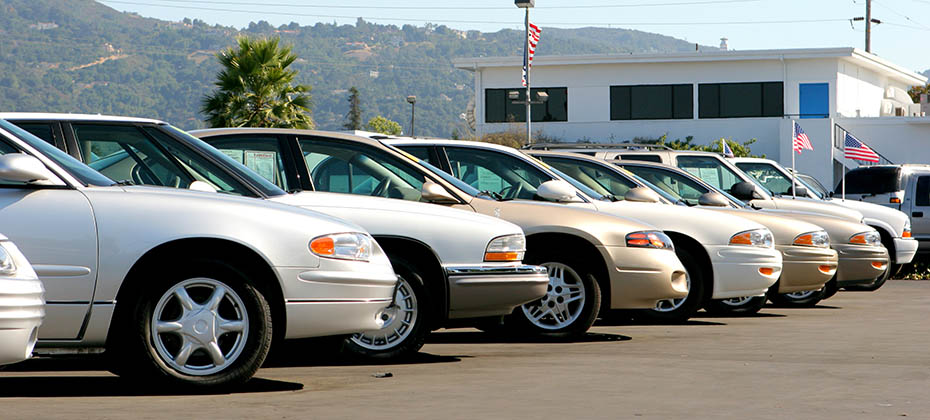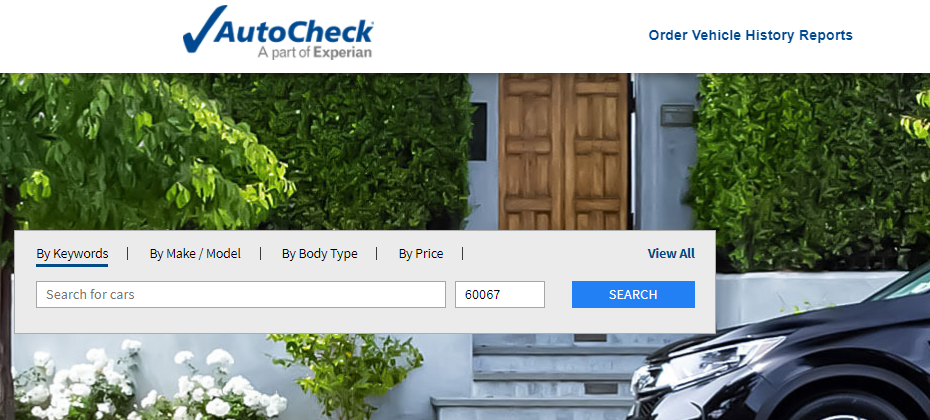Vehicle Data

As I reflect on the past two years and think about how the pandemic impacted the automotive industry, I realized that although it was a crazy ride, I believe there was a silver lining – at least for marketers at OEMs, agencies, and large dealer groups, who are tasked with advertising to consumers. I’ll explain more in a minute. First, let’s very briefly recap some trends we’ve recently experienced: Auto dealerships shut down showrooms to in-person shoppers Chip shortages paralyzed new vehicle manufacturing (and are ongoing) Shoppers rapidly shifted to online car shopping (and buying) Pre-owned vehicle sales went through the roof (and remain high) Streaming services went wild, and consumers continue to devour content Marketers shifted focus to more digital marketing to meet consumer demand So, the silver lining? Auto marketers certainly had to take a crash course in the new consumer buying journey. One result was an appreciation for the complexities of digital experiences and a new understanding of unique consumer behaviors and preferences. Here are a few things marketers learned: Consumers want to feel connected to their preferred brand(s) They want to be in charge of their shopping and buying journey Consumers want transparency and honesty from their brand (and dealer) They want the information they are looking for to be both instantly available and on their preferred devices Consumers want time to make a decision Before the pandemic, research revealed that about 88% of prospective car buyers researched options online before stepping into a dealership, and 60% of shoppers spent six or more months on their search, with up to 24 marketing touchpoints along the way.1 So, how do marketers ensure their advertising appears, front and center, for all these touchpoints? Today, the challenge for auto marketers is to stay on top of the consumer’s needs and be there when they are “looking or hearing” their message. This includes creating relevant messages across all media, including social, email, text, web, direct mail, Connected TV, linear, and Addressable TV channels. And don’t forget, consumers have multiple devices now, so it’s even harder for your message to “find them.” During their auto buying journey, consumers are a moving target! To succeed in today’s new world, auto marketers need to rely heavily on data insights that enable them to send targeted, relevant messages exactly where the consumer wants them. Is this even possible? In a word, yes. We’ve published a resource for auto marketers To help marketers stay on top of the latest data science trends and the insights this data produces, we’ve written, Using Data Insights to Drive Measurable OEM Marketing Strategies. We discuss the new consumer buying journey, the explosion of personal devices, the latest in data-driven insights, the increase in media channels, and how to best target, activate, and measure marketing campaigns while optimizing spend. We cover five areas that we believe auto marketers need to focus on to be successful: Identity: Learn the importance of linking fragmented data across channels, platforms, and devices to build unified customer profiles that enable a multi-channel customer experience. Insights: Understand how applying data insights can help make more strategic and effective marketing decisions regarding your audiences, channels, messaging, and goals. Audiences: Read about the value of leveraging automotive, predictive, and lifestyle data to build precisely segmented audiences for every marketing campaign. Activation: Learn how you can leverage our relationship with more than 100 media partners and digital platforms to launch and optimize your marketing campaigns across all channels. Measurement: Read about the importance of accurate measurement and determining the ROI of your online and offline campaigns to gain actionable insights for future campaigns. Get started by reading a complimentary copy of Using Data Insights to Drive Measurable OEM Marketing Strategies. Learn more about Experian's OEM marketing solutions. https://www.forbes.com/sites/forbescommunicationscouncil/2020/09/10/why-automotive-marketing-is-changing-and-how-to-meet-the-demand/?sh=16d583c9a3dd

We’ve listened to user requests and created a mobile app that offers a quick and simple way to scan (or enter) a VIN to view AutoCheck Vehicle History Reports (VHRs)! Along with our recently launched AutoCheck Member site, the mobile app continues our efforts to make information and insights easy to access. With AutoCheck VHRs, you can: • Better manage risk and confidently buy and sell the right vehicles • Make more strategic decisions when stocking the right inventory • Have the right combination of information and insights to more strategically market to consumers With the new mobile app and re-designed member site, AutoCheck makes staying informed easier than ever by putting AutoCheck at your fingertips on your mobile device. Leave your notepad on your desk when appraising a trade, and simply scan a VIN to view the VHR instantly. How to get started The AutoCheck mobile app is available for AutoCheck members using Android or Apple phones/tablets. Simply download the app to see how easy it is to access vehicle history reports. Quickly use the app during trade appraisals to pull a VHR on the spot! You can also use the app to quickly scan a VIN, eliminating the possibility of incorrectly “typing” in the wrong VIN. The full VHR is optimized to be easy to read on your mobile device, giving you all the necessary information to make a good acquisition decision. The AutoCheck mobile app also offers members access to a report history to quickly review past vehicle reports you have run. Did you know? AutoCheck has data from over 95% of U.S. auction houses with 99.82% manufacturer coverage of open recall data for vehicles on the road Experian aggregates and analyzes tens of thousands of distinct accident sources; many provided only to AutoCheck We’re the only VHR provider integrated on all the top consumer vehicle shopping sites In this short video, you will see sample mobile and tablet screens including how to enter or scan a VIN, view a Vehicle History Report, and learn how to see recently run VHRs. How AutoCheck can help improve your business You may also be interested in learning how AutoCheck VHRs can improve your business by reading Vehicle Detail Pages with a Free VHR Have Higher Lead and Sale Conversion Rates or how we helped a large insurance company better manage risk in our case study, LexisNexis Helps Manage Risk for National Insurance Company. For dealers interested in learning more about the benefits of becoming an AutoCheck subscriber, contact us today!

Easily access an Open Recall Report for all your listed inventory whenever you need it and as often as you like. Run the report in real-time to learn which of your units have an open recall and what that recall information is: the recall date, the recall detail, and the recall.

We recently collaborated with our integration partner, TrueCar, to analyze vehicle history data's impact on online listings. We analyzed millions of records over months of data and matched online listings to DMS sales to confirm closing rates. The short story – dealership Vehicle Detail Pages (VDPs) on TrueCar.com that offer consumers a Free Experian AutoCheck vehicle history report had a higher lead conversion rate. We expected the data to confirm that VDPs with a Free VHR would have a higher lead conversion rate. However, we uncovered additional insights that even surprised us! The most common search filter Consumers value transparency from a dealership and expect to be informed if a vehicle they are looking at has been in an accident. We learned from the study that when consumers used vehicle history data to filter their user's search results, the “accident” filter was the most common vehicle history data filter used. More than one-third of consumers using vehicle history data to filter search results use “accident” as a filter criterion. Why is this important? There are over 280 million vehicles in operation, and four out of ten of those vehicles have been in an accident. That means more than 100 million vehicles on the road have been in an accident—and 20% of vehicles on the road have had multiple events. Higher conversion rates (with a twist) Having been in the automotive data and analytics space for years, we were not surprised that the analysis continued to support our previous research that vehicle detail pages with a free vehicle history report have a higher lead conversation rate! Things started to get even more interesting, though: VDPs with a free AutoCheck VHR converted at a 27% higher rate. That holds true if the VDP page had a Free AutoCheck report available to the consumer, but if the consumer clicked on the free AutoCheck vehicle history report to view the details of the information, the lead conversion rate jumped to 318% (no, that’s not a typo). The lead conversion rate increased to 318% if the consumer viewed the AutoCheck vehicle history report! VDP sale conversion rates And while we all appreciate a good lead conversion success story, we also wanted to analyze sale conversion rates. We learned that TrueCar VDPs that offered consumers a Free AutoCheck vehicle history report on behalf of a dealership had a higher sales conversion rate. Not only is the rate higher—the sale conversion rate is 50% higher for VDPs that offer a free VHR. Here are a few more interesting pieces of information we uncovered with this latest analysis: VDP’S without an accident close at about 200% higher than those with an accident Vehicles without frame damage had a 250% greater close rate Vehicles without a salvage indicator had a 634% greater close rate Consumers want to make informed decisions when purchasing vehicles, and automotive dealerships can help by providing them with a free AutoCheck Vehicle History Report on every Vehicle Detail Page. Help improve lead conversation rates, sale conversation rates, and build customer trust by offering vehicle history transparency. For dealers with an AutoCheck subscription, you can activate your vehicle listings for free on TrueCar by calling AutoCheck Customer Service at 1 888 409 2204. Dealers interested in learning more about the benefits of becoming an AutoCheck subscriber, contact us today!

At Experian, we like to share success stories with automotive professionals—especially when it relates to one of our solutions—AutoCheck! Below is a case study involving our client, LexisNexis. We discuss how they were able to help their customer, a large national insurance company utilize AutoCheck vehicle history data to help manage risk and ensure more accurate underwriting. The challenge: LexisNexis Risk Solutions is a leader in providing essential information to help customers assess, predict, and manage risk. So, when a national insurance client asked them to evaluate the automotive mileage data model they were currently using for their underwriting, LexisNexis was happy to help. The client wanted to make sure they were analyzing the most accurate, up-to-date mileage data available. They wanted to make sure they were best managing risk, while continuing to offer competitive rates and a high level of customer service to their prospects and client base. The approach: First, the LexisNexis team set out to validate the frequency of recent VIN-level mileage data being populated into the current mileage model. They prepared a data analysis for their client, comparing length of ownership to the age of the oldest reported odometer reading based on AutoCheck vehicle history data. Second, they reviewed the frequency of current AutoCheck mileage data records and compared that data to AutoCheck vehicle history records. They wanted to determine if there were more mileage records being reported currently versus in the past. The LexisNexis team analyzed a large sample of VIN records with impressive results. The solution and outcome: When the team compared data from mid-2020 to that from late 2021, the analysis confirmed there were more VINs populated with mileage records with the data pulled from late 2021. Specifically, 45% of VINs had mileage records from within the last three years that did not previously have a mileage record within that time frame. The national insurance company was thrilled with the lift in mileage data year over year! In summary, because AutoCheck vehicle history data is constantly enhanced and expanded, we can provide reliable, accurate data to industry leaders like LexisNexis so they can offer the best insights to their client relationships. Recent mileage data is a critical component to use when evaluating a vehicle’s history. Experian Automotive is committed to continuously expanding our AutoCheck vehicle history data overall, including the frequency and recency of reported mileage information. AutoCheck is the industrial-strength vehicle history report that automotive professionals trust to help manage risk and confidently underwrite more of the right vehicles. To learn more about the many benefits of becoming an AutoCheck subscriber contact us today.

It’s that time of year. All my tax documents are rolling in and I know I need to start working on my taxes. Like most Americans, I’m hoping to end up with a refund! In 2020, 170M people filed tax returns and according to the IRS, they issued almost $126M in refunds.¹ Additionally, 2020 surveys revealed that as much as 9 percent of over 100 million taxpayers spent their refunds on major purchases, including new or used cars!2 As a dealer, it’s not uncommon to see an influx of consumers looking to purchase a vehicle around tax refund time. This year, with the continued shortage of new inventory, dealers can look for consumer interest to remain focused on pre-owned vehicles. Take advantage of shoppers by optimizing your online presence Dealers can help buyers by making it easy for them to quickly find vehicle history information on all your online inventory. One of the best ways to do this is by providing an AutoCheck® Vehicle History Report on your Vehicle Detail Pages (VDPs). Be sure to provide this information on all consumer shopping portal sites where you list your inventory. Why is this important? Because seventy-eight percent of consumers visit two or more sites during their shopping journey.3 You need to do everything you can to quickly capture their attention, increase lead conversion and close rates for your inventory. So, why AutoCheck VHRs? Because AutoCheck is the only vehicle history report listed on all the top consumer vehicle shopping portals. Your VHRs are on display where consumers are shopping online. We work with all the top online automotive shopping sites to help dealers like you optimize your online presence. Consumers use VHR information to make purchase decisions Our research shows that consumers increasingly use vehicle history information to narrow their consideration pool and filter search result pages to help make purchasing decisions. This transparency about a vehicle’s history (that could include damage and accident information) is what consumers are seeking. It’s never been easier for dealers to share key vehicle history data to help consumers make an informed decision so they can turn to your dealership to purchase. For dealers that are not yet subscribers, here are a few other things you may not know about AutoCheck vehicle history reports. We do not re-market to shoppers or display competitive units as alternatives on your AutoCheck.com VDP listings. Our goal is to help your dealership sell your inventory. For dealers with an AutoCheck subscription, you can activate your vehicle listings for free on AutoCheck.com by calling client services at 1 888 409 2204. For dealers who are interested in learning more about the benefits of becoming an AutoCheck subscriber contact us today. Happy tax season! 1. https://www.cnbc.com/2021/03/31/will-you-get-a-tax-refund-or-owe-the-irs-32-percent-of-americans-dont-know.html 2. https://santanderconsumerusa.com/blog/do-people-really-buy-new-cars-with-their-tax-refunds 3. Car Buyer whitepaper. https://www.coxautoinc.com/wp-content/uploads/2021/02/Cox-Automotive-Car-Buyer-Journey-Study-Pandemic-Edition-Summary.pdf

Creating a consumer experience where a customer receives a series of relevant and timely content is the goal of omnichannel marketing. OEM marketers work hard to develop effective marketing strategies that create fully integrated shopping experiences for customers. Build loyal relationships with omnichannel marketing Well designed, omnichannel marketing strategies foster a sense of relationship between the vehicle/brand and the consumer that can increase brand and dealership loyalty. Today's OEM marketers understand their customers are “everywhere.” Channels have exploded, especially in the past several years so marketers need to know how to best reach consumers. With multiple apps, websites, social media, email, streaming content, videos and brick-and-mortar dealerships the challenge for marketers is how to pull it all together. Recent research shows that 60% of millennials expect brands to provide consistent experiences across multiple channels and that Gen Z and Millennials are most likely to be “bought” by an effective omnichannel strategy.1 According to Forbes, “companies with the best omnichannel customer engagement strategies turn 89% of buyers into loyal customers. And according to Omnichannel Retail Statistics, companies with weak omnichannel strategies retain only 33% of their customers.”1 It is clear, that implementing an effective omnichannel strategy can result in more sales and increased loyalty. Use data insights to identify and segment audiences When approaching omnichannel marketing, we recommend OEM marketers conduct a detailed analysis, backed by automotive research and data. This analysis will help to accurately identify and segment audiences to deliver targeted, tailored content along the journey. Experian leverages our consumer, lender, and vehicle data along with market insights to facilitate powerful segmentation. As a result, OEM marketers can reach audiences in an effective manner allowing for a more personalized experience. For a deeper dive into segmentation, marketers can gain insights and understanding of key attributes using Experian’s CustomerView data. This data includes demographics, buyer personas, wants and needs, buying patterns, customer behavior, preferences, attitudes, and commonalities. These automotive data insights cover over 310 million U.S. consumers, 126 million households containing 1,500+ individual and household level attributes and 2500+ geographic attributes. This type of segmentation will help you create the right content for the right target group to be delivered at the right time in the right channel. If your message is irrelevant to the customer, or on the wrong channel, you just might lose engagement. Enlist the power of the Experian Marketing Engine™ to facilitate market insights, audience targeting, audience activation and measurement to monitor ongoing success. Learn how the Experian Marketing Engine can help you create audience segments that empower more effective omnichannel marketing today. 116 Proven Omnichannel Statistics That Will Boost Your Sales in 2021 (savemycent.com)

As we head into 2022 there continues to be heightened interest in auto auctions. Experian has observed a little cooling in auction activity in some parts of the western U.S., but the Central, Eastern and Southern geographies continue to see high unit activity, as depicted in the chart below. Let's take a look at how vehicle history data can help consignors make more informed decisions before auction. (Click here to access these insights directly). Review vehicle history data before auction assignment During this current climate, you can make the most of every auction (whether physical or digital) by reviewing vehicle history data before assignment. Have you ever brought inventory to a physical auction only to realize the vehicle had issues you didn’t know about? This can catch consignors off-guard and prove costly. So, how can you take advantage of vehicle history reports to help make better purchasing decisions? Vehicles with damage aren’t a lost cause, but rather consignors need to be strategic about where they send damaged vehicles to auctions to ensure the sale and maximize the sales price. A little extra research can help uncover hidden issues and vehicle damage. Vehicle history reports reviewed prior to auction assignment can assist consignors in uncovering vehicle damage and determine if the vehicles are appropriately priced to move before locking in their auction location. A quick review of the vehicle’s history report for major state title brands can reveal areas of concern and will also show other major problems, such as accidents, damage and total insurance loss. If damage or a major concern is uncovered, consignors can proactively evaluate the auction assignment. For example, the vehicle might have a better chance at selling in a hotter market like the Central, Southern, or Eastern U.S. than in a Midwest market. The key is to always know before you go by taking advantage of region and channel data to help ensure the most profitable sale. “Know before you go and tell before you sell,” says Joe Miller, VP of Client Experience at AutoIMS, the popular inventory management platform serving auctions and commercial consignors. “We continue to hear how vehicle history is influencing decisions not only about which auction to send the car to, but what repairs to perform, how best to floor price the car, and how to represent it in the lane. A new era of data-rich transparency is upon us in auto remarketing, and those tapping into the VHR will ultimately save time and make more money as they improve their reputation in the lanes.” By leveraging the Experian AutoCheck Vehicle History Report, consignors have quick and easy access to information that can help them make more informed, profitable decisions. To become an AutoCheck Vehicle History Report subscriber, sign up today.

Successful salespeople know that their busiest time is never when they are selling a lot of cars. They are way busier when they are not selling! The act of prospecting, following up, and consultatively selling is a time consuming and challenging process. Nevertheless, for salespeople, this pattern can lead to long term success in automotive sales. Until the inventory and chip shortage issues are resolved, you may find that you are busier than ever. You can no longer wait to greet shoppers as they walk into the show room and spend time chatting and test driving in hopes they will purchase a vehicle the same day. Floor traffic has been on a steady decline for a decade and with today’s vastly reduced inventory there is vastly reduced foot traffic. This does not mean that you should not or cannot sell cars. It means that your time should be filled with prospecting, following up on marketing leads and focusing on the dealership’s loyal customers. Focus on strategies that drive pre-orders In addition to prospecting activities, you will need to be extra resourceful during the sales process. For example, when the dealership does not have a specifically requested car on the lot, you should shift focus from the standard sign-and-drive approach to a focus on pre-ordering vehicles. Pre-orders can be attractive to customers because they give them the ability to create a new vehicle according to their color, options, and other preferences rather than settling for whatever the dealer has in stock (which right now is minimal at best). Experian’s Automotive Intelligence Engine™ (AIE), a fully customizable suite of marketing solutions can provide you and your dealership with the data insights necessary to find consumers who would be interested in your brand and models and who are in an equity position to facilitate a pre-order. Here are a few examples of how AIE helps dealers find likely pre-order consumers: Scenario: A Mercedes dealership would like to secure pre-orders and generate interest in vehicles for when inventory becomes available in 2022. Utilize AIE’s Market Insights to find lifestyle and demographic information to find consumers with a high buying propensity to purchase a luxury vehicle. Use AIE’s Audience Targeting to learn who of those consumers are in a positive equity position. Identify consumers who are likely to buy your models based on their prior purchasing history. Using marketing solutions to help find the right consumer now to create interest in the future could be the key to success in 2022. Focus on short term leases opportunities In today’s market, we also recommend dealers focus on targeting consumers who are nearing the term of their lease—because the end of a lease forces consumers to either turn in the vehicle or purchase it. In many cases, the customer can upgrade to a model with more features or a model in a different class—both of which may be compelling, even if the newer vehicle is an older model year than the trade in. This way, the dealer obtains the later model, lower mileage vehicle and the customer gets a model with the extra features they want or an entirely new class of vehicle. The Automotive Intelligence Engine can provide dealers with near term lease consumers in their area for all brands. For an in depth look at this topic, read our November blog “Using Data Insights to Focus on Near-Term Lease Sales Opportunities.” Learn more about Experian’s Automotive Intelligence Engine.

There are over 280M cars and light duty trucks on the road and over 25% have at least one open recall. Do you know which of your online units have an open recall? Would it be helpful to your business if you had up-to-date recall information available every day—automatically? AutoCheck® dealerships can receive an emailed daily Open Recall Inventory Check Report as part of their AutoCheck subscription. The report (PDF format) will show dealers which of their online listings have an open recall. The report will list inventory that has open recall(s) based on pre-owned vehicles the dealer has listed on AutoCheck.com. Having an easily reviewable report delivered to your Inbox is a great way to stay on top of internal recall policies and procedures. Taking care of open recalls is good for business Taking action on recalls is also good for business. Consumers searching your online inventory want transparency from their dealer and running across a vehicle that has an open recall may not be in the dealer’s best interest. Taking care of that recall and ensuring that a consumer doesn’t stumble across it during the purchase process is good for consumer loyalty. Another AutoCheck dealer benefit is the option to list pre-owned inventory on CarZing and AutoCheck.com for no additional fee. AutoCheck is the exclusive vehicle history report provider on CarZing.com, so the CarZing vehicle details page will display both AutoCheck data elements and provide a link to the full AutoCheck report. Any AutoCheck dealer displaying their inventory on CarZing will automatically have their inventory available via the “Finding Vehicles” search features on AutoCheck.com. (Yes, you read that correctly – dealers can list their inventory on CarZing and AutoCheck.com for NO additional fee – it’s part of their AutoCheck subscription!) In addition, any dealer listing their inventory on AutoCheck.com can also receive the AutoCheck Open Recall Inventory Check report. Please note that Experian provides the AutoCheck Open Recall Inventory Check Report based upon recall information reported and made available to Experian by the applicable automotive manufacturer(s). Clients should check the automotive manufacturer’s website for the most current recall information for all inventory vehicles. For dealers with an AutoCheck subscription, you can activate your vehicle listings for free on AutoCheck.com and CarZing.com, by calling client services at 1 888 409 2204. For dealers that are not yet subscribers, here’s a few other things you may not know about AutoCheck Vehicle History Reports. We do not re-market to shoppers, resell VDP leads or offer your competitors inventory for consideration on AutoCheck.com. Our goal is to help your dealership sell your inventory. For dealers who are interested in learning more about the benefits of becoming an AutoCheck subscriber contact us today.

While dealers wait out the chip shortage, many are looking for new revenue streams and creative ways to maintain profit levels. Dealers understand that used vehicles are more valuable than ever and that savvy consumers who are near their lease term can purchase their vehicle with a much higher book value than their negotiated residual and capitalize on that extra equity. At Experian Automotive, we help dealers analyze consumer and market data insights so they can develop marketing strategies that more effectively engage consumers. In today’s market, we recommend dealers focus on targeting consumers who are nearing the term of their lease—because the end of a lease forces consumers to either turn in the vehicle or purchase it—and many consumers realize they can purchase their equity rich vehicle and trade it in anywhere. Dealers desiring to conquest customers would benefit from using data insights to develop marketing strategies to help educate consumers of their options. So, how do dealers make sure their lease customers remain loyal to their dealership? One way is to target those customers that are near term and recommend a trade in. In many cases, the customer can upgrade to a model with more features or a model in a different class—both of which may be compelling, even if the newer vehicle is an older model year than the trade in. This way, the dealer obtains the later model, lower mileage vehicle and the customer gets a model with the extra features they want or an entirely new class of vehicle. Both parties are happy. What about third party lease buy outs? In response to the inventory shortage, many captive lenders are no longer permitting 3rd party lease buy outs. In other words, consumers are required to purchase their leased vehicle at an in-brand dealership. Initially, this would appear to bolster brand loyalty by making it more challenging to switch brands. However, educated consumers know they can simply purchase the vehicle and drive it to another dealership as a trade. We recommend automotive dealers educate consumers on their options through effective marketing strategies that offer options and more freedom in their car purchasing. Dealers looking for every sales opportunity are utilizing data sources such as Experian’s Automotive Intelligence Engine™ (AIE) to identify all consumers with leased vehicles for their brands. Because the OEM will not share lease customer information for neighboring stores, dealers must seek out this information on their own. Experian’s Automotive Intelligence Engine provides off lease consumer information for conquest brands as well as dealer brands. The OEM still expects each store to be successful and using data-driven insights to uncover opportunities in this tight market is one critical way dealers can stay competitive and increase brand loyalty. The chip shortage will eventually recede but until then dealers can use automotive data insights that can help them remain profitable. Learn more about Experian’s Automotive Intelligence Engine.

As more consumers turn to the internet to research and purchase preowned vehicles, dealers have focused marketing efforts to the online marketplace to get their vehicles in front of shoppers. According to Think with Google, 95% of vehicle buyers use digital as a source of information and it takes 65% of buyers just three weeks to research vehicles online prior to purchase. With seventy-eight percent of consumers visiting two or more sites during their shopping “journey”1 how do dealers capture their attention, increase lead and sales conversions? Dealers need to share key data in a vehicle history report such as information related to reported accidents, odometer readings, open recalls, and whether the vehicle qualifies for buyback protection. These details help consumers better understand and make informed decisions when shopping. Case Study: How leveraging the AutoCheck VHR subscription increased lead and sales conversions Our integration partner, CarZing, an online auto shopping portal, offered a Free AutoCheck® Vehicle History Report on their Vehicle Detail Page (VDP) which increased lead and sales conversions. Together, we analyzed six months of lead activity on millions of vehicle listings on CarZing focusing on the 200 most popular vehicles by year/make/model. Key findings indicated that vehicle listings offering a Free AutoCheck VHR on the VDPs achieved a higher lead conversion rate than listings for the same year/make/model for vehicles without a Free AutoCheck report. Here’s a few highlights from the full report: Furthermore, when layering in available sales data, sales conversion is higher for vehicles featuring a free VHR available to consumers than vehicle listings that did not. Based on the results, CarZing’s Director of Operations, Frank Merle strongly encourages all AutoCheck clients take advantage of the exponential value that offering a free AutoCheck report brings to dealership VDPs. Dealers with an AutoCheck subscription can list their vehicles for free on AutoCheck.com and CarZing.com. Simply contact your Experian account executive or call 1 888 409 2204. For dealers that are not yet subscribers, here’s a few more things you may not know about Experian AutoCheck Vehicle History Reports. We do not re-market to shoppers, resell VDP leads or offer your competitors’ inventory for consideration on AutoCheck.com. Our goal is to help your dealership sell your inventory. For dealers who are interested in learning more about the benefits of becoming an AutoCheck subscriber contact us today. 1https://www.coxautoinc.com/wp-content/uploads/2021/02/Cox-Automotive-Car-Buyer-Journey-Study-Pandemic-Edition-Summary.pdf

In Experian’s Automotive Market Trends Review: Q2 2021, we looked at the data to better understand EV and internal combustion engine registration trends.

When we look at how automotive manufacturers and dealers have marketed vehicles over the last few decades, we can see how through every decade, and every learning, it has led to data-driven marketing strategies that are powering success today. Let’s take a look: Strategic marketing in the 1990’s In the 1990’s dealership marketing included mainly newspaper and radio advertisements complimented by occasional direct mail pieces mailing to every home in a zip code. OEMs purchased ad time on popular Television and their dealer associations and local dealers had an option to do the same. Because the 1990’s was the age of “mass media,” marketing was based off geography. There was less attention on channel or audience and a good deal of spending! Cars were sold. Strategic marketing in the 2000’s The new millennium brought advancements in computers and databases. Dealerships explored the exciting world of internet promotion and email marketing and continued using traditional newspaper, radio and television to drive traffic. mail programs such as the “scratch and win” or the “key to a car you can win” efforts were common, resulting in massive mail-based marketing campaigns. Then came 2008, when many dealers drastically cut back on spending and were focused mainly on surviving the Great Recession. As we all know, many dealers, and even vehicle makes, did not. Strategic marketing in the 2010’s In the beginning of the decade, manufacturers and dealers were still recovering from the recession but were slowly feeling more optimistic about the economy. If there is one thing the industry learned from the recession, it was to be much more strategic when it came to spending. During this decade, ad technology advanced, as did the ability to evaluate marketing spend. Dealers became aware of the true cost of their traditional marketing ways and embarked on new paths of marketing to a smaller but more specific audience. Equity mining and greatly advanced revolutionized the direct mail and related online arena. As the decade drew to a close, marketers leveraged solutions where merge fields enabled customization and personalization for both direct mail and email marketing. With the ability to deliver massive volumes at a lower cost, email blasts grew in popularity. Social media platforms emerged as a force, and dealers experimented to invent new ways to leverage them. Television marketing underwent a massive facelift as consumers left cable for streaming services resulting in new advertising strategies such as addressable and connected TV, OTT (Over The Top) advertising. Strategic marketing in 2020 2020 will forever be remembered as the year of the pandemic. In automotive marketing, it was also the year of reinvention! With many showroom closures, dealers and OEMs found themselves with a reduced advertising budget and a greater need to find more targeted audiences with more effective marketing messaging. How do I master my market share? Who is in-market for my vehicles? How is my website performing? Which customers are in equity? Which customers have added a child to the household? How do I reach them in a digital world? This is where Experian has helped both manufacturers and dealers. Experian’s automotive marketing solutions help marketers utilize vehicle, consumer, lender, and market data to leverage market insights, target the right audience, develop effective messaging strategies, and measure outcomes to continually optimize results. Over the last four decades, automotive marketing strategies have become much more data driven, so having a solution that uses data insights to help retain loyal customers and win new conquest customers, all while reducing total marketing spend, is a key requirement for success in this decade…and beyond. If you're a marketer at a Dealership, learn more about our marketing solutions here. If you're an Auto OEM marketer, learn more about our marketing solutions here.

The AutoCheck FREE Flood Risk Check site has been updated with Hurricane Ida information New cars have been in short supply due to the worldwide microchip shortage, so consumers quickly turned their attention to used cars. Unfortunately, dealers continue to struggle with obtaining enough used car inventory to meet demand. To add to an already challenging year, Hurricane Ida hit the gulf coast in August resulting in an estimated 250,000 cars sustaining flood damage. It’s more important than ever that dealers be careful about obtaining pre-owned cars that could potentially have flood damage. The best way to mitigate the risk of purchasing a flood damaged vehicle is to start by running an AutoCheck Free Flood Risk Check. Visitors simply enter any vehicle's 17-digit VIN and the tool will check for flood brands and provide information if the vehicle was registered in a region impacted by a FEMA disaster declaration. Two levels of reporting available The first level of reporting determines whether the vehicle has been titled/registered 12 months prior in a county that has been identified as requiring public and individual assistance (FEMA categories A and B) for a FEMA-declared major disaster. This would yield a “Yes” result. For instance, you would get a “Yes” result if the vehicle was registered in an impacted area during the time of a FEMA-declared major disaster like Hurricane Ida. The “Yes” result should not be interpreted as confirmation of flood damage or even possible flood damage. The data is provided merely as information regarding the location of the vehicle’s registration/title history so users can be aware of risk exposure. For example, the Hurricane Ida region had thousands of damaged cars, but some cars in the region may not have been damaged by the hurricane — the owner could have driven the car when they evacuated, or a child or other family member may have been out of town with the car when the hurricane hit. The second level of reporting is based on search results from Experian data such as flood title and problem records, including flood State title brands, auction flood announcements, salvage auction flood designations, and other vehicle records determined by Experian to relate to or suggest an increased likelihood of flood damage or risk exposure. It takes time for claims and updates to vehicle title information to appear on a vehicle’s history and although the DMV requires that title brands be issued for vehicles damaged by floods, not every vehicle flood event is reported by car owners. Unreported flood events may not appear on an AutoCheck Flood Risk Check or AutoCheck Vehicle History Report. Although Experian provides flood related records from available data sources, we cannot provide assurance that an AutoCheck Flood Risk Check that does not produce any records means that the subject vehicle has not experienced flood damage. That’s why it’s important to review a full AutoCheck Vehicle History Report, which—in addition to potential flood damage—includes reported accidents, branded titles, recalls, number of owners and more. Once you run the full Vehicle History Report we recommend an independent evaluation and inspection of the vehicle to determine and confirm a vehicle’s condition prior to purchase. Try the AutoCheck Flood Risk Check today to help mitigate the risk of purchasing flood damaged vehicles. Not an AutoCheck subscriber? Contact us to become an AutoCheck client.